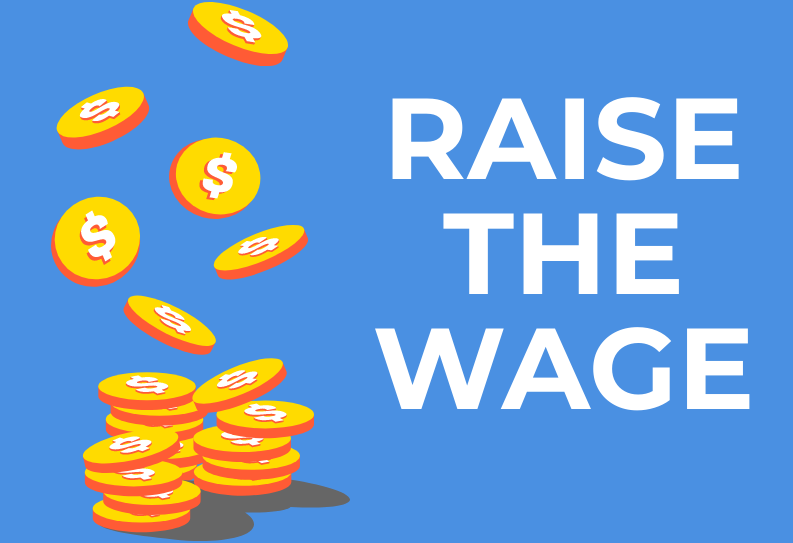The fight for 15
Low-income workers deserve a livable wage
March 10, 2021
When getting a job during high school it is common that it will be a minimum or low wage job. The national minimum wage is $7.25. The amount can range from state to state with Washington D.C having the highest minimum wage at $14 an hour, and Nebraska’s minimum wage is $9 an hour. The Biden administration has proposed a $15 national minimum wage as a portion of the COVID-19 relief bill. This would greatly benefit not only workers but the American economy.
In 2009, the national minimum wage went from $5.15 to $7.25. Since then the amount has failed to increase even though the inflation rate has gone up 23.89%. As prices continue to rise $7.25 is no longer a livable wage, and a rise in the minimum wage is long overdue. This rise would not just benefit “some teenager flipping burgers” but entire families living below the poverty line. According to the U.S Bureau of Labor Statistics, 38.6% of people working at minimum wage are adults over 25. At this rate, adults working a 40 hour week all 52 weeks of the year would make around $15,080. This is still $4,000 below the federal poverty line for a three-person family. Someone who works a full-time job should not be struggling to make a livable wage.
Along with inflation, the cost of living has also increased while the minimum wage has remained stagnant. The cost of living has increased a whopping 20% since 2009 and essentials like housing and healthcare continue to rise. From 2018 the price of healthcare has increased 4.6% and with the COVID-19 pandemic, it continues to rise. Bringing in a low-income can cause stress as bills start to pile up. This stress can cause turmoil in the home and at work. Low- income families are struggling to pay for healthcare and according to Harvard Business Review, the cost of health insurance and medical care has pushed more than 7 million people into poverty.
Low-wage workers are relying on government assistance just to make ends meet. According to the Economic Policy Institute, 52.6% of workers making between $7.42 and $9.19 receive some kind of assistance through government programs. For every dollar the minimum wage is raised it is estimated that spending on government assistance programs will decrease by $5.2 billion. Raising the minimum wage would allow for fewer Americans to rely on welfare programs and will benefit taxpayers in America.
A rise in the minimum wage would also mean a boost in the economy. Consumer spending makes up 70% of the economy. With higher incomes, minimum wage workers will have more disposable income to spend on the luxuries in life. Struggling to pay bills is not the only cause of distress for low-income workers. Not being able to afford basic necessities such as fresh and nutritious foods, and new clothing can also be an affliction. The Institute for Policy Studies has calculated that for every dollar added to the minimum wage, $1.21 will go into the economy. Raising the minimum wage would also benefit businesses. A study by Georgetown economists found that a rise in wages is linked to an increase in employee morale and productivity. Raising the minimum wage also decreases turnover. This can reduce the cost of training and recruiting.
The main concern with a rise in the minimum wage is job loss, with companies paying their employees more they will have to lay some people off. While this is a valid concern, it is not entirely true. According to University of Massachusetts Amherst economist Arin Dube, gradually raising the minimum wage would not result in extreme job loss or a skyrocket in prices.
With inflation and the price of living continuing to rise, a raise in the minimum wage is long overdue. This would benefit not only the low-income workers but businesses and the economy. No one working a full-time job should struggle to survive. That is why the minimum wage needs to be raised in the coming years.







